Best Asus laptops in 2024
The best Asus laptops, according to our testing

1. The list in brief ↴
2. Best overall
3. Best Chromebook
4. Best gaming
5. Best workstation
6. Best MacBook alternative
7. Best handheld
8. How to find the right laptop
9. How we test
10. Why trust Laptop Mag
The best Asus laptops you can get are hidden among the company's expansive portfolio of laptops. It can be overwhelming to figure out which one is best for you. There are so many! Good news: we've sifted through Asus' massive line-up of laptops so you don't have to.
The best laptops from Asus are known for their mind-blowing, state-of-the-art innovation. Asus' impressive innovations (we love their dual-screen laptops) and economically priced notebooks keeps this laptop maker high in the industry's esteem.
After all, Asus doesn't want to get lost in a sea of boring laptops. Instead, it wants to stand out of the crowd and offer powerful performance in a laptop while still tackling the challenge of portability. That being said, we've tested a cornucopia of Asus laptops, including their battery runtimes, display quality, sturdiness, and more.
Asus announced exciting new laptops at CES 2024, including the Asus Chromebook CM30 which could knock its predecessor, the CM3, off this list. Following that event, we reviewed the new Asus Zephyrus G14, which made a solid comeback.
Below we've compiled a well-tested list of Asus' best laptops.

Rami loves a great Asus laptop, especially the gaming variety. After reviewing dozens of laptops over 6+ years, Rami can spot a star laptop in any category, whether it's cheap or premium. His one and only five-star laptop review was of the Asus ROG Zephyrus G14. It went downhill over the years, but the recent entry is pretty solid. Extensive testing and hands-on experience taught Rami how to ensure that you will get the most for what you're paying for with the best Asus laptops.
The Quick List
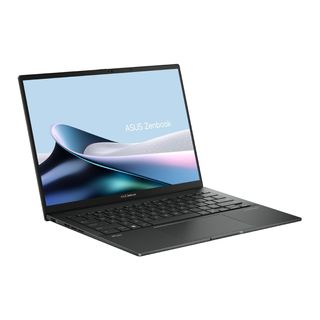
Best overall
The Asus Zenbook 14 OLED is a dream laptop for Asus lovers. Featuring a gorgeous OLED display, a powerful Intel Core Ultra 7 processor, and almost 16 hours of battery life!

Best Chromebook
The Asus Chromebook Detachable CM3 can survive for nearly 12 hours on a single charge. It's also a 2-in-1, which means that it can transform into a number of different positions with that beautiful 10.5-inch, 1900 x 1200-pixel touchscreen.
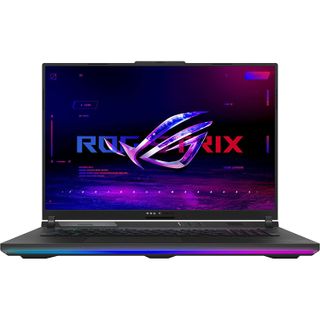
Best gaming
The Asus Strix Scar 18 is large and in charge. But it’s not just the 18-inch display that wows The uber-powerful Core i9 CPU and Nvidia RTX 4090 GPU make the Strix Scar an undeniable beast of a gaming laptop.
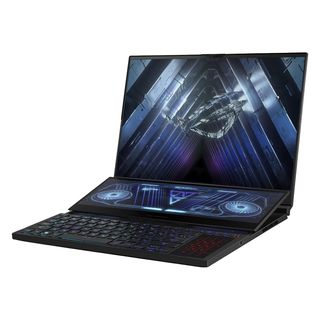
Best workstation
The Asus ROG Zephyrus Duo 16 is a beautiful monstrosity with the bizarrest deck layout I’ve ever seen, but against all odds, the design works perfectly for anyone with a multitask-heavy workflow.
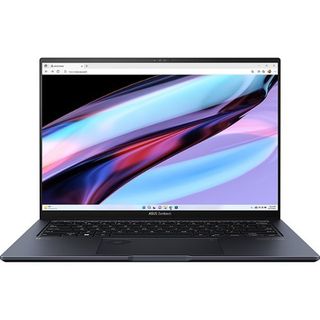
Best MacBook alternative
Matching the MacBook Pro 14’s utilitarian design and performance is no easy feat. Still, the Asus ZenBook Pro 14 OLED makes it look effortlessly. However, it’s a little short on battery life.
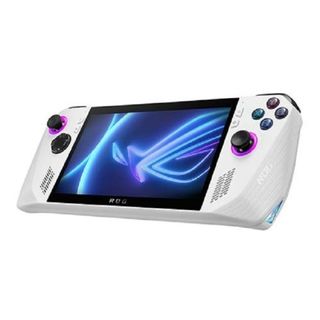
Best handheld
While the Asus ROG Ally may not technically be a gaming laptop, its Windows 11 OS and excellent performance metrics make one thing clear: This is a great gaming laptop at heart.
Best Overall





Specifications
Reasons to buy
Reasons to avoid
The Asus Zenbook 14 OLED (Q425M) is a killer laptop with incredible battery life offering itself up for an affordable price. The Zenbook 14 banged out a stunning 15 hours and 52 minutes on the Laptop Mag battery test. Asus has been killing it with its laptops lately, and this is a perfect example of that. Battery life isn't the only thing this machine has got going on.
Sporting Intel's latest Core Ultra 7 155H, the Asus Zenbook 14 has the power to get you through a modest number of tasks. We threw a couple dozen Chrome tabs, spreadsheets, and even a Photoshop editing session at it. The Zenbook 14 didn’t so much as flinch.
One of the biggest highlights of this affordable laptop is its 14-inch, 1080p, OLED display. Covering 79.8% of the DCI-P3 color gamut and clocking in 339 nits of brightness, the Zenbook 14 will be there for you at the end of the day when you want to stream your favorite shows on a gorgeous window.
Meanwhile, the Zenbook 14’s comfortable keyboard will ensure you don't get exhausted throughout your day. Typing across the keyboard felt great thanks to the 1.4mm key travel, which provided a pleasant click-to-pressure ratio.
Warning — its quality audio will get you headbanging subconsciously. Packed with Harman Kardon and Dolby Atmos-certified super-linear speakers, the Zenbook 14 captured quality mids and highs along with a wide bass.
The device is also incredibly portable. It’s not the lightest machine on this list, but it’s remarkably thin, coming in at 0.59 inches. You might be able to slot that into a medium-sized purse. Another neat feature is its webcam privacy shutter. We don’t see that on a lot of laptops at this price point, so it’s a nice bonus.
See our full Asus Zenbook 14 OLED (Q425M) review.
Best Chromebook
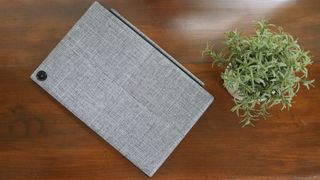
Specifications
Reasons to buy
Reasons to avoid
The Asus Chromebook Detachable CM3 is not only the best Asus Chromebook, it's one of the best Chrome OS devices we've ever tested. It earns that praise with its incredible 12-hour battery life, 2-in-1 design and vivid display. It's also affordable, starting at just $329.
For that price, you get a MediaTek MTK 8183 processor, 4GB of RAM, 64GB of storage, and a magnetic case and keyboard. If you want more storage, you can upgrade to 128GB which bumps the price up to $389.
This is a super durable device. It meets military-grade durability standards and the fabric case is stain-resistant. That makes the CM3 a fantastic device for kids, students or anyone who needs a rugged, portable device for a budget-friendly price. The CM3 isn't cheap, though. It's sleek and lightweight and performs well in either tablet or laptop mode.
See our full Asus Chromebook Detachable CM3 review.
Best gaming

Asus ROG Strix Scar 18 playing Cyberpunk 2077.




Specifications
Reasons to buy
Reasons to avoid
The Asus ROG Strix Scar 18 is my first taste of the new chips from Intel and Nvidia; it's incredibly delicious. The Strix Scar 18 is a relentless beast, running with Intel's Core i9-13900HX processor and Nvidia's RTX 4090 GPU. Both are uber-powerful and highly overclockable so you can squeeze every power out of the system. Plus, the notebook has this Blade Runner vibe I'm very into. Along with its 18-inch, QHD+ (2560 x 1600), 240Hz display that serves up a beautiful picture with buttery smooth rendering, it's easily our favorite config.
So, onto the tests, there were very few places where the ROG Strix Scar 18 missed the mark. The laptop easily trounced everything we threw at it. The Strix Scar 18 rarely falls below a three-digit result during gaming tests. We saw a scorching 154 fps on the Assassin Creed Valhalla benchmark while it reached 181 and 152 fps on Rise of the Tomb Raider and Grand Theft Auto V. How about overall performance?
The 13th Gen CPU smoked the competition, scoring 19,233 on Geekbench 5.4, which is more than double the premium gaming laptop's overall performance average. This system completed our video transcoding test in just 2 minutes and 49 seconds (more than a minute faster than the MacBook Pro 16-inch M2 Pro Max), while its pair of 1TB SSDs dominated our file transfer tests.
However, all that power comes at a cost. The Scar 18's battery life is 4 hours and 26 minutes short. Another con is the 720p webcam; we would expect 1080p at this eye-watering price. Overall, the Asus ROG Strix Scar 18 is the gaming laptop to beat and has also earned its way onto our Best Asus Laptops page.
Unfortunately, the webcam is rough, so if that's athat'sity to you, we recommend checking out the best webcams.
Read our full Asus ROG Strix Scar 18 review
Best Workstation



Specifications
Reasons to buy
Reasons to avoid
The Asus ROG Zephyrus Duo 16 is a beautiful monstrosity with the most bizarre deck layout we've ever seen, but against all odds, the design works perfectly for anyone with a multitask-heavy workflow.
Why is it a beautiful monstrosity, you ask? Well, it’s beautiful because it has a striking dual-screen design where a 16-inch, QHD+, mini-LED main display and an edge-to-edge secondary panel work in tandem to deliver multitasking harmony. On the other hand, it’s a monstrosity because this gnarly, six-pound gaming laptop requires you to tear down any preconceived notions of what you think a laptop should look like. The keyboard and touchpad, for example, are not where you expect them to be, forcing you to get accustomed to a new “lay of the land,” if you will.
Packed with top-of-the-line specs, including an AMD Ryzen 9 7945HX CPU, an Nvidia GeForce RTX 4090 GPU with 16GB of VRAM, and 32GB of RAM, the Duo 16 will set your bank account aflame with a price tag nearing $5,000. However, the Asus gaming laptop will be an excellent investment for those who constantly cross-reference documents for work — this chunky money is a major time saver.
On our gaming benchmarks, we ran it through Grand Theft Auto V and Borderlands 3. In the former at Very High (1080p), it achieved an excellent 158 frames per second, while the latter on Badass (1080p) yielded 135 fps. In comparison, other laptops with an RTX 4090 like the Razer Blade 16 achieved 164 fps and 142 fps respectively. Essentially, it's in line with what you'd expect from an RTX 4090 graphics card.
You can also expect subpar battery life, which is no surprise considering it's a gaming laptop with a second display. On the Laptop Mag battery test, which involves surfing the web at 150 nits, the Zephyrus Duo lasted 4 hours and 7 minutes. With the dual displays on, that number crawls down to 3 hours and 32 minutes. And while gaming using the PCMark 10 battery test, that number drops to 1 hour and 22 minutes. You won't want to game on this with it disconnected from an outlet.
See our full Asus ROG Zephyrus Duo 16 review.
Best MacBook alternative





Specifications
Reasons to buy
Reasons to avoid
If you need a lightweight, super potent content-creator laptop, the Asus Zenbook Pro 14 OLED is hard to beat. It has a better display and can go toe to toe with the MacBook Pro 14 performance-wise. The only place where the MBP 14 dominates the Zenbook is in battery life, where Apple laptops are own the market.
The Zenbook Pro 14’s 2.8K OLED touch display is stunning, and Apple doesn’t do touch. Also, to get a MacBook Pro 14 with 32GB of RAM and 1TB of storage will run you $2,899. If you want to save some money and get equal performance, the Asus Zenbook Pro 14 is a great option you need to take seriously. You may lose a battery life battle, but you can afford a good external battery pack with what you save and still have money for other gear.
See our full Asus Zenbook Pro 14 OLED review.
Best handheld





Specifications
Reasons to buy
Reasons to avoid
You're probably thinking, "this isn't a gaming laptop." Well, I'm here to tell you that it's arguably better. Handheld gaming devices are cheaper than your average gaming laptop and have quite a bit of power backing them.
The Asus ROG Ally is a classy entry into the handheld gaming scene post Steam Deck. One of your greatest advantages with the ROG Ally is the display. Yes, it's smaller than a gaming laptop, but it looks way better. The 7-inch, 1920 x 1080p AMD FreeSync touch panel sports a 7-millisecond response rate with a 120Hz refresh rate. It averaged 465 nits of brightness, brighter than some premium gaming laptops.
As far as performance goes, you won't play games on high settings, so put that out of your mind. But considering the size, the Ally pushed hard on our testing. For example, with Assassin’s Creed Valhalla, the ROG Ally scored 29 fps at 1080p on High. Turn that to low, and you'll likely get over 60 fps.
Regarding portability, the ROG Ally weighs only 21.4 ounces and measures 11 x 4.4 x 0.8 inches. You can practically throw this thing in a purse (I did). Unfortunately, its portability doesn’t extend to the battery life. Unlike the other products on this list, you’re getting 1 hour and 43 minutes — that is persistent gaming. If you’re not gaming, it lasts 5:51, but something tells me you won’t be using this Switch-like device for anything but.
The Asus ROG Ally may not be what you're looking for, but you should consider it between the price and what you get. This is great for controller-based gaming and playing on the go, whether on your daily commute or traveling across the skies.
See our full Asus ROG Ally review.
How to choose the best Asus laptop for you
Do your intensive daily workloads require more RAM than the average Joe? Are you a video editor who needs extra storage? Are you a gamer who wants a powerful GPU? Sorting through the best Asus laptops to fit your lifestyle is a tricky business.
To make your shopping process a little easier, our Editor-in-Chief Sherri L. Smith has put together some tried-and-true guidelines to help you choose the best laptop.
Budget: What you get for the money.
You can find decent Windows laptops and high-quality Chromebooks for under $500. However, better mainstream laptops usually cost more than $700 and premium Ultrabooks can run over $1,000. The best gaming laptops can cost $2.000 and up, but you can play the latest titles at decent frame rates on gaming laptops under $1,000.
Screen Size: 12 to 14 inches for Portability
Knowing a laptop's screen size tells you a lot about its portability overall. If you want to use your computer on your lap or carry it around a lot, go for one with a 12, 13 or 14-inch display. If you want to use the computer on tables and desks and won't carry it around much, a 15-inch model may give you more value. Some gaming rigs, media machines and workstations even have 17 or 18-inch screens, but those are hardest to carry.
2-in-1 or Clamshell?
More and more of today's laptops are 2-in-1s with screens that either bend back 360 degrees or detach so you can use them as tablets. If you like the idea of using your laptop in slate mode for drawing, media consumption or just using it standing up, a 2-in-1 could be for you. However, you can often get better features or a lower price by going with a traditional clamshell-style laptop.
Battery Life: 8+ Hours for Portability
Unless you only plan to use your laptop on your desk, battery life matters. Even within the home or office, having plenty of juice enables you to work on the couch or at the conference table, without being chained to the nearest outlet. For the best portability, we recommend getting a laptop that lasted over 8 hours on the Laptop Mag Battery Test. The longest-lasting laptops endure for over 10 hours.
Specs: 1080p / Core i5 / 8GB Are Best Bets
You can spend a lot of time delving into specs, but here are the key components to think about. If you just want really good mainstream performance, go for a Core i5 CPU, 8GB of RAM, a 256GB SSD and a 1080p screen.
How We Test the Best Asus Laptops
We put each laptop through extensive benchmark testing — both synthetic and real-world — before they end up in the hands of our reviewers. We evaluate each aspect of the laptop, including its performance, battery life, display, speakers and heat management.
In our benchmark testing, we use a Klein K10 colorimeter to detect the brightness and sRGB color gamut of the laptop's display. For performance testing, we run the laptop through a gauntlet of benchmarks, including Geekbench 4.3 and 5.0 and 3DMark professional graphics tests.
To determine real-world performance, we task the laptop to convert a 4K video to 1080p resolution and to duplicate a 4.97GB multimedia file. Our real-world graphics test is the Dirt 3 benchmark with medium settings at 1080p resolution.
We also run heat tests by playing a 15-minute full-screen video and measuring temperatures in different areas of the laptop. Last but not least, our battery test consists of continuous web surfing over Wi-Fi at 150 nits of brightness. For MacBooks and premium Windows 10 laptops, a runtime of over 9 hours is considered a good result whereas gaming laptops and workstations that can stay powered for longer than 5 hours deserve praise.
These tests are complemented with extensive hands-on testing from our reviewers who critique everything from the laptop's materials to the feel of its touchpad.
See this page on How We Test Laptops for more details on our benchmarking procedures.
Why Trust Laptop Mag
Laptop Mag reviews over one hundred different laptops every year, from paperweight ultralights to everyday workhorses to lumbering gaming notebooks that scorch the frame rates of even the hottest AAA games. We're not just experts in the laptop field, as we go one step further by meticulously testing smartphones, tablets, headphones, PC accessories, software, and even the latest in gaming.
We are 100% independent and have decades of experience to help you buy with confidence. In fact, Laptop Mag has been testing and reviewing products for three decades, and we continue to deliver trustworthy reviews you can rely on.
Our experienced team of writers and editors scour the available information about the laptop and put it through its paces to determine which is best for you. But before they start, the testing team subjects each system to a rigorous regimen of synthetic and real-world tests to see how a system handles the type of work and games you’re most likely to throw at it.
Our editorial trustworthiness is enforced by one of the world's largest technology publishers, Future Publishing. As a company, we have unrivaled experience across every tech sector — and we're the group's specialist for all things mobile tech.
Stay in the know with Laptop Mag
Get our in-depth reviews, helpful tips, great deals, and the biggest news stories delivered to your inbox.

Rami Tabari is an Editor for Laptop Mag. He reviews every shape and form of a laptop as well as all sorts of cool tech. You can find him sitting at his desk surrounded by a hoarder's dream of laptops, and when he navigates his way out to civilization, you can catch him watching really bad anime or playing some kind of painfully difficult game. He’s the best at every game and he just doesn’t lose. That’s why you’ll occasionally catch his byline attached to the latest Souls-like challenge.